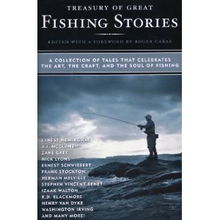Content:
When it comes to the thrill of fishing, there's nothing quite like targeting the majestic swordfish or the swift-moving mackerel. These fish are not only a delight to catch but also offer a delicious meal. Whether you're a seasoned angler or a beginner looking to expand your fishing repertoire, mastering the techniques for catching swordfish and mackerel can elevate your fishing experience. Here's a comprehensive guide to help you outsmart these aquatic predators.
Understanding Swordfish and Mackerel
Before diving into the fishing techniques, it's crucial to understand the habits and preferences of swordfish and mackerel.
Swordfish:
- Habitat: Swordfish are found in tropical and temperate waters, often near the surface or at the water's edge.
- Feeding: They are opportunistic feeders, primarily targeting smaller fish, squids, and crustaceans.
- Size: They can grow up to 20 feet in length and weigh over 1,000 pounds.
Mackerel:
- Habitat: Mackerel are found in temperate and tropical waters, often in schools near the surface.
- Feeding: They are voracious feeders, consuming a variety of fish, squid, and crustaceans.
- Size: Mackerel can range from 2 to 4 feet in length and weigh up to 20 pounds.
Essential Equipment for Swordfish and Mackerel Fishing
To successfully catch swordfish and mackerel, you'll need the right equipment:
Rod and Reel: A heavy-duty rod and reel designed for saltwater fishing are essential. For swordfish, a rod with a minimum of 50 pounds of test curve is recommended, while mackerel can be caught with a lighter setup, around 20-30 pounds.
Line: Use high-test monofilament or braided line. For swordfish, a line with a breaking strength of 80-100 pounds is ideal, while mackerel can be caught with a line as light as 30 pounds.
Hooks: Large, strong hooks are necessary. For swordfish, a 7/0 to 9/0 hook is suitable, while mackerel can be caught with a 3/0 to 5/0 hook.
Lures and Bait: Live bait, such as squid or bonito, is often used for both species. Artificial lures, like swimbaits or spoons, can also be effective.
Tackle Box: Carry a variety of sinkers, swivels, leaders, and other accessories to ensure you're prepared for any situation.

Techniques for Catching Swordfish
Chumming: Start by chumming the area to attract swordfish. Use a mixture of fish oil, fish heads, and other fish parts to create a scent trail.
Drifting: Once the swordfish are attracted, start drifting with the current. Keep your line tight and be prepared for a sudden strike.
Jigging: Use a heavy jigging spoon or a large artificial lure to mimic the movement of prey. Drop the lure to the desired depth and pull it back quickly, allowing it to fall back to the bottom.
Trolling: Trolling with live bait or artificial lures can be effective. Set your speed to around 4-6 knots and keep an eye on your rod for any signs of a bite.
Techniques for Catching Mackerel
Surface Trolling: Mackerel are often found near the surface, so surface trolling with artificial lures or live bait can be highly effective.
Drifting: Similar to swordfish, drifting with the current can attract mackerel. Use small lures or live bait to mimic struggling prey.
Bottom Fishing: Mackerel can also be caught by bottom fishing with artificial lures or live bait. Drop your lure to the bottom and retrieve it slowly.
Jigging: Use a light jigging rod and a small spoon or lure to mimic the movement of small fish. Jig the lure up and down to attract mackerel.
Safety and Etiquette
Always prioritize safety and adhere to local fishing regulations. Here are some tips:
- Wear a life jacket and ensure you have a first aid kit on board.
- Check the weather forecast before heading out and be prepared for sudden changes.
- Respect the marine environment and release any fish that are not legal or that you do not intend to keep.
In conclusion, catching swordfish and mackerel requires patience, skill, and the right techniques. By understanding the habits of these fish, equipping yourself with the proper gear, and mastering the fishing techniques outlined above, you'll be well on your way to reeling in these impressive species. Happy fishing!












